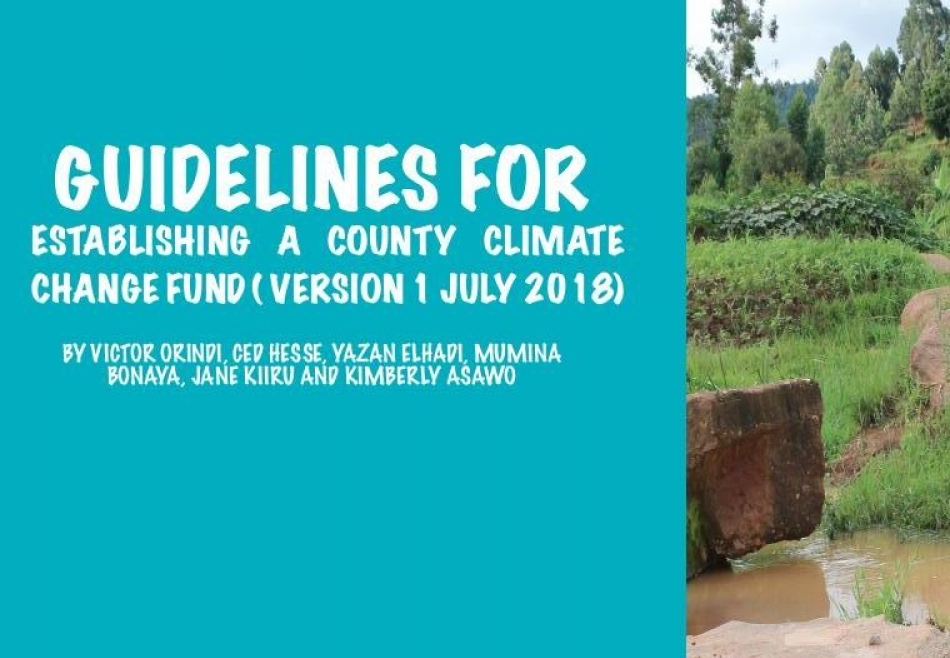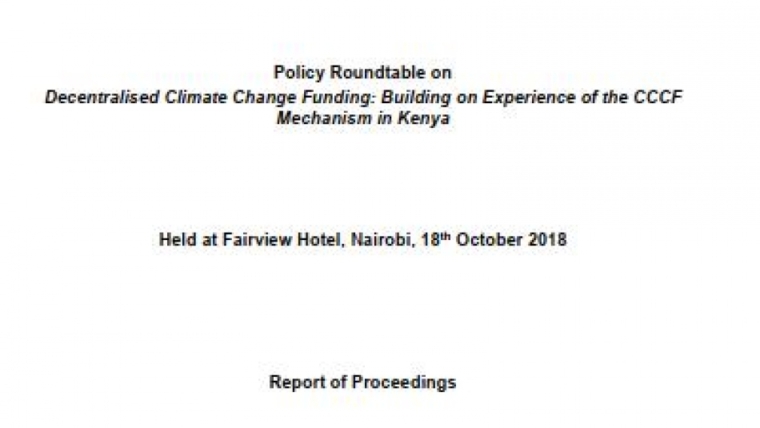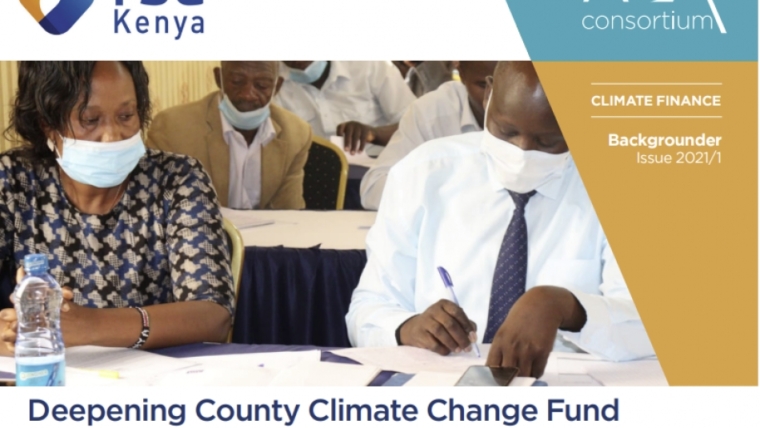The Kenya County Climate Change Fund (CCCF) mechanism, initially piloted as the Climate Adaptation Fund in Isiolo and subsequently scaled out to Garissa, Kitui, Makueni and Wajir Counties, is a pioneering mechanism to facilitate the flow of climate finance to county governments and simultaneously empower local communities, through strengthening public participation in the management and use of those funds, to build their resilience to a changing climate. It is a practical example of how climate finance can support climate-resilient development and effective adaptation as set out in the Paris Agreement. It has been piloted successfully in five counties, and its expansion is one of the priorities in the National Climate Change Action Plan, 2018-2022.
This working paper provides a synthesis of learning on the CCCF mechanism’s effectiveness in delivering investments in public goods that build resilience to climate change in poor and vulnerable communities. It draws on findings from numerous studies, project monitoring and evaluation (M&E) reports, and internal and external evaluations to review what has and has not worked to date; provides supporting evidence for operational features that have strengthened the capacity of county government, communities and local institutions to plan for climate-induced hazards and opportunities while ensuring social inclusion and public accountability; and highlights the lessons learnt and improvements needed to scale out the mechanism, especially in contexts that are different from those of the pilot operations. It thus comes at a critical moment as the Government of Kenya prepares to scale out the mechanism nationwide.
We find that the CCCF mechanism is helping to enhance inclusion and participation of communities in the decision-making process around CCCF investments as well as in the wider county development planning process. Results from studies focusing on CCCF investments reveal a strong level of community participation in and knowledge of the CCCF mechanism implementation process, driven and facilitated by ward-level adaptation committees. Surveyed households were positive about their involvement in the consultation and decision-making process and saw tangible adaptation benefits from the investments. Respondents suggested the greater focus on public participation had improved standards in the way contractors implemented the investments. Evidence is also emerging that the mechanism’s approach to devolving decision making to Ward County Climate Planning Committees (WCCPCs) and its emphasis on participation and inclusion is strengthening the approach in County Integrated Development Plans (CIDPs) to citizen/community participation and inclusion.
The CCCF mechanism is also leading to greater engagement of women and youth in the planning process at the community and ward levels, and there is evidence that the mechanism has helped integrate climate change concerns in planning and budgeting. Although the CCCF mechanism has supported the development of county-level climate information services (CIS) plans for all five counties of CIS information has not yet been systematically used for the design of all investments. For example, technical specifications for developing water pans do not accommodate potential run-off from years of high and low rainfall or projected changes in rainfall patterns and intensity



